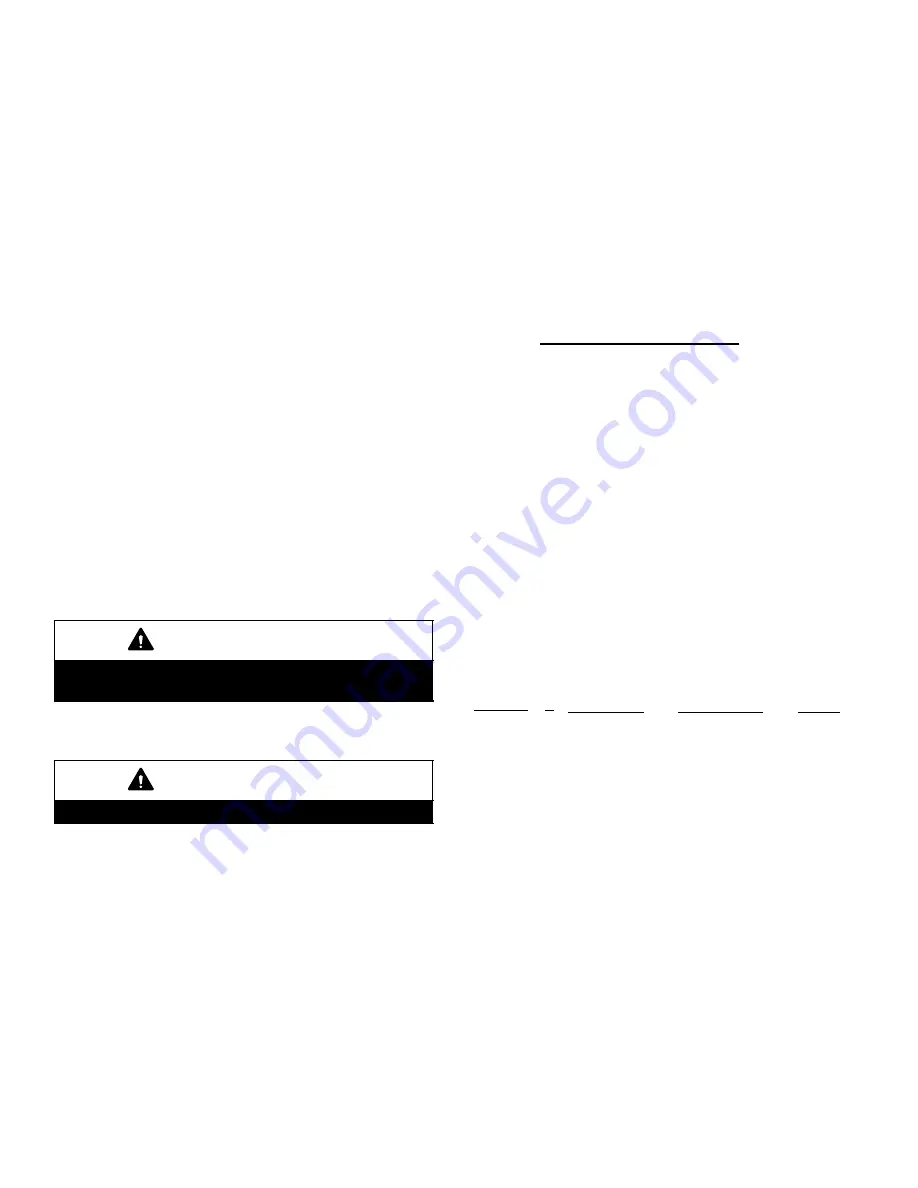
Page 17
line at manifold. Break vacuum in system with nitro-
gen pressure by opening manifold high pressure
valve. Close manifold high pressure valve to center
port.
4− Close nitrogen drum valve and disconnect from
gauge manifold center port. Release nitrogen pres-
sure from system.
5− Connect vacuum pump to gauge manifold center
port. Evacuate system through manifold service
valves until vacuum in system does not rise above
.5mm of mercury absolute pressure or 500 microns
within a 20−minute period after stopping vacuum pump.
6− After evacuation is complete, close manifold center port,
and connect refrigerant drum. Pressurize system
slightly with refrigerant to break vacuum.
III − CHARGING
This system is charged with HFC−410A refrigerant which
operates at much higher pressures than HCFC−22. The
recommended check expansion valve is approved for use
with HFC−410A. Do not replace it with a valve that is de-
signed to be used with HCFC−22. This unit is NOT ap-
proved for use with coils that include metering orifices or
capillary tubes.
The unit is factory−charged with the amount of HFC−410A
refrigerant indicated on the unit rating plate. This charge is
based on a matching indoor coil and outdoor coil with a 15
foot (4.6 m) line set.
For varying line set lengths and for
various indoor unit matchups, the refrigerant charge
must be adjusted per tables
6 (Page 19) and 7
(Page 19).
A blank space is provided on the unit rating
plate to list the actual field charge.
IMPORTANT
Mineral oils are not compatible with HFC−410A. If oil
must be added, it must be a polyol ester oil.
A − Check indoor air before charging
Figure 18
IMPORTANT
CHECK AIRFLOW BEFORE CHARGING!
NOTE − Be sure that filters and indoor and outdoor coils are
clean before testing.
Cooling mode indoor airflow check
Check airflow using the Delta−T (
D
T)
process (figure 18).
Heating mode indoor airflow check
Blower airflow (CFM) may be calculated by energizing
electric heat and measuring:
S
temperature rise between the return air and supply air
temperatures at the indoor coil blower unit,
S
measuring voltage supplied to the unit,
S
measuring amperage being drawn by the heat unit(s).
Then, apply the measurements taken in following formula
to determine CFM:
CFM =
Amps x Volts x 3.41
CFM =
1.08 x Temperature rise (F)
B − Set Up for Checking and Adding Charge
Setup for charging
Connect the manifold gauge set to the unit’s service ports
(see figure 14):
S
low pressure gauge to
vapor service port
S
high pressure gauge to
liquid service port
Close manifold gauge set valves. Connect the center man-
ifold hose to an upright cylinder of HFC−410A.
Calculating charge
If the system is void of refrigerant, first, locate and repair
any leaks and then weigh in the refrigerant charge into the
unit. To calculate the total refrigerant charge:
Amount
specified
on
nameplate
Adjust amt. for
variation in
line set length
(table 6)
Additional charge
specified per
indoor unit matchup
(table 7)
Total
charge
+
+
=








































